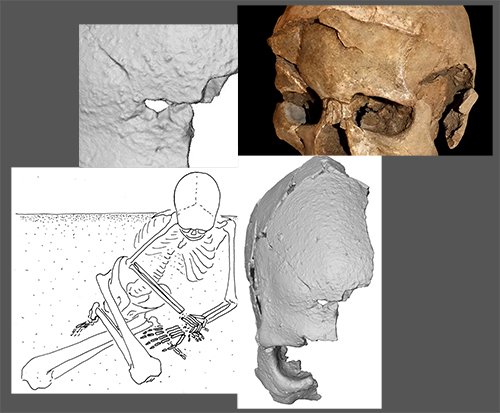Traumobita team
Traumobita data
Traumobita partners
Traumobita funders
Traumobita achievements
Traumobita objectives

Traumatic death affects our daily life, but how did traumatic mortality affect human behaviour from an evolutionary perspective? TRAUMOBITA
aims to understand how traumatic mortality among prehistoric humans shaped our behaviour during the Late Pleistocene to the Middle Holocene.
Our goal is to study these behavioural adaptations on the basis of two analytical sections:
1. by analysing human fossils from different key sites from Lake Turkana, the cradle of humankind – the archaeopaleontological record
is an essential one for reconstructing our own evolutionary path.
2. by integrating forensic science into the taphonomic study of human fossils, in addition to developing new non-invasive methods based on virtual analysis and experimentation.
Did the manner by which our ancestors died influence how our societies developed? Answering this question could change how we understand human societies.
Traumatic mortality has an enormous influence among non-human primate social life and environmental adaptations, but not much effort has been dedicated to the study of how such deaths affected the behavioural development of modern humans. Identifying and understanding how humans died is essential for determining the role of violence in shaping our behaviour, and, it seems, an equally important factor among our primate relatives.
The data obtained from this approach will facilitate identification and characterization of traumatic mortality in the archaeological record, in order to integrate our results into the study of past societies to determine which behavioural changes are related to traumatic mortality. The research is an integrated analysis that guarantees the interdisciplinary and innovative nature of the project. Little is known on the role of traumatic mortality in human behavioural adaptations, and therefore the project will represent a major advance.
